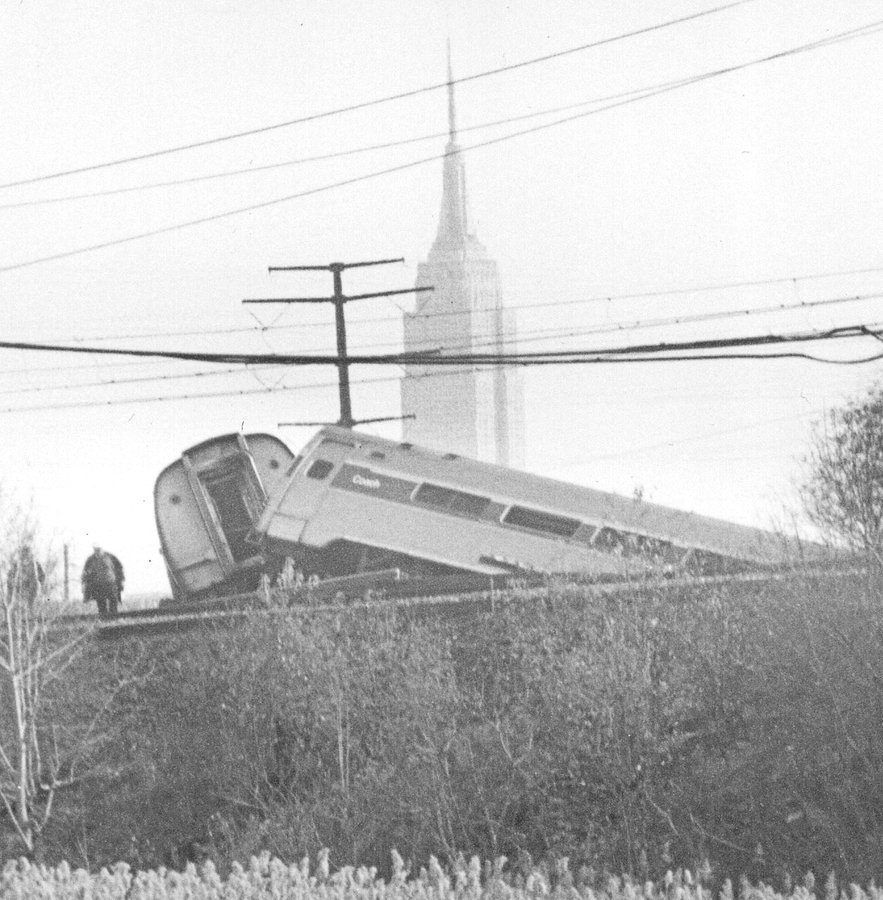Concerned about the ever-increasing number of trains carrying fossil fuels near Jersey City Heights, community leaders will host a meeting that includes environmental officials and others to discuss the dangers associated with transporting of oil by rail in Jersey City.
Freight transport increased along the western slope of Jersey City in the early and mid-1990s when state and federal authorities closed down lines that ran along the waterfront. This was partly to make way for residential development of the waterfront and to provide a route for the Hudson Bergen Light Rail line from Bayonne and the West Side of Jersey City through the city to Hoboken, Weehawken, West New York, and North Bergen.
Although some of the old freight lines still exist in the Greenville section of Jersey City and parts of Bayonne, most of the current traffic goes in and out of Croxton Yards on the Jersey City/Secaucus border. The main access to these yards is a north/south corridor that parallels Tonnelle Avenue in Jersey City and North Bergen.
“There are about 40,000 people living in the evacuation zone.” – Ariel Schwalb
____________
Rail crashes are not uncommon
Organizers claim that the CSX Rail Line, which has been increasingly carrying crude oil extracted by fracking in North Dakota’s Bakken Shale, goes directly through the Heights of Jersey City.
In 2014 there were 143 oil train crashes nationally, up from just nine accidents in 2010, according to a 2015 article by National Geographic.
Commuter trains have had five incidents along the Jersey City/Secaucus border since the late 1990s.
Jersey City Mayor Steven Fulop commented in response to a frightening FEMA accident simulation study conducted last year in Jersey City.
“It would be a catastrophic situation for any urban area and Jersey City is one of the most densely populated areas in the entire country,” Fulop said at the time.
Organizers point to a 2013 derailment in Lac Megantic, Canada that killed 43 people when an oil train careened off the tracks and exploded in the city’s downtown district.
The public forum, hosted by Food & Water Watch and Anakbayan NJ (a Filipino community group) will coincide with 2016 Philippine Solidarity Week, with seven events throughout New Jersey commemorating the Philippine-American War and to raise awareness and support for the continuing struggles of the Filipino people.
A look at climate change and extreme weather
Called “From NJ to the Philippines: Struggle for Climate Justice,” the community event will discuss the dangers associated with oil by rail transport in Jersey City.
In addition to highlighting these local dangers, event organizers will draw connections between local fossil fuel dependency and global climate change, with a specific focus on recent extreme weather events in New Jersey and the Philippines.
Hurricane Sandy, which affected thousands of Jersey City residents including many Philippine-Americans, was the deadliest hurricane of the 2012 Atlantic hurricane season, and the second-costliest hurricane in United States history.
Typhoon Haiyan in 2013 was one of the strongest tropical cyclones ever recorded, which devastated portions of Southeast Asia, particularly the Philippines, where over 6,000 people died.
Nina Macapinlac, of Filipino-American youth organization Anakbayan, one of the featured speakers at the community event, recently completed a solidarity mission trip to the Philippines to learn from the survivors of Typhoon Haiyan.
“As someone who was born in the Philippines and raised in the US, my trip back home was a pivotal experience in my life,” he said. “In traveling the country and speaking with survivors in the Visayas region, I learned that the livelihoods of entire communities are still destroyed nearly two years after the storm. And extreme weather disasters since Haiyan have not gotten the same attention from the media. Survivors have also suffered a lack of substantive relief under a corrupt government that does not serve the interests of the people. Despite all of this, people are actively organizing their communities for climate justice.”
Organizers say the Feb. 11 event aims to build awareness around these issues and cultivate increased grassroots support for policies that can move New Jersey away from continued fossil fuel development and instead make New Jersey a leader in energy efficiency and clean renewable technology.
Ariel Schwalb, a local organizer with Food & Water Watch, said Jersey City Heights has a significant population of Filipinos and local groups are concerned about the amount of train traffic passing along Tonnelle Avenue.
“There are about 40,000 people living in the evacuation zone,” Schwalb said. “It would be almost impossible to evaluate that many people in the event of a disaster.”
She said Food & Water Watch looked closely at the rail lines over which these fuels were being transported, and found that the route along Tonnelle Avenue has the highest amount of fuel transported of any location on the East Coast.
The community event is not a protest, she said, although she did not rule out protests in the future. “This is a panel discussion,” she said.
Al Sullivan may be reached at asullivan@hudsonreporter.com.
